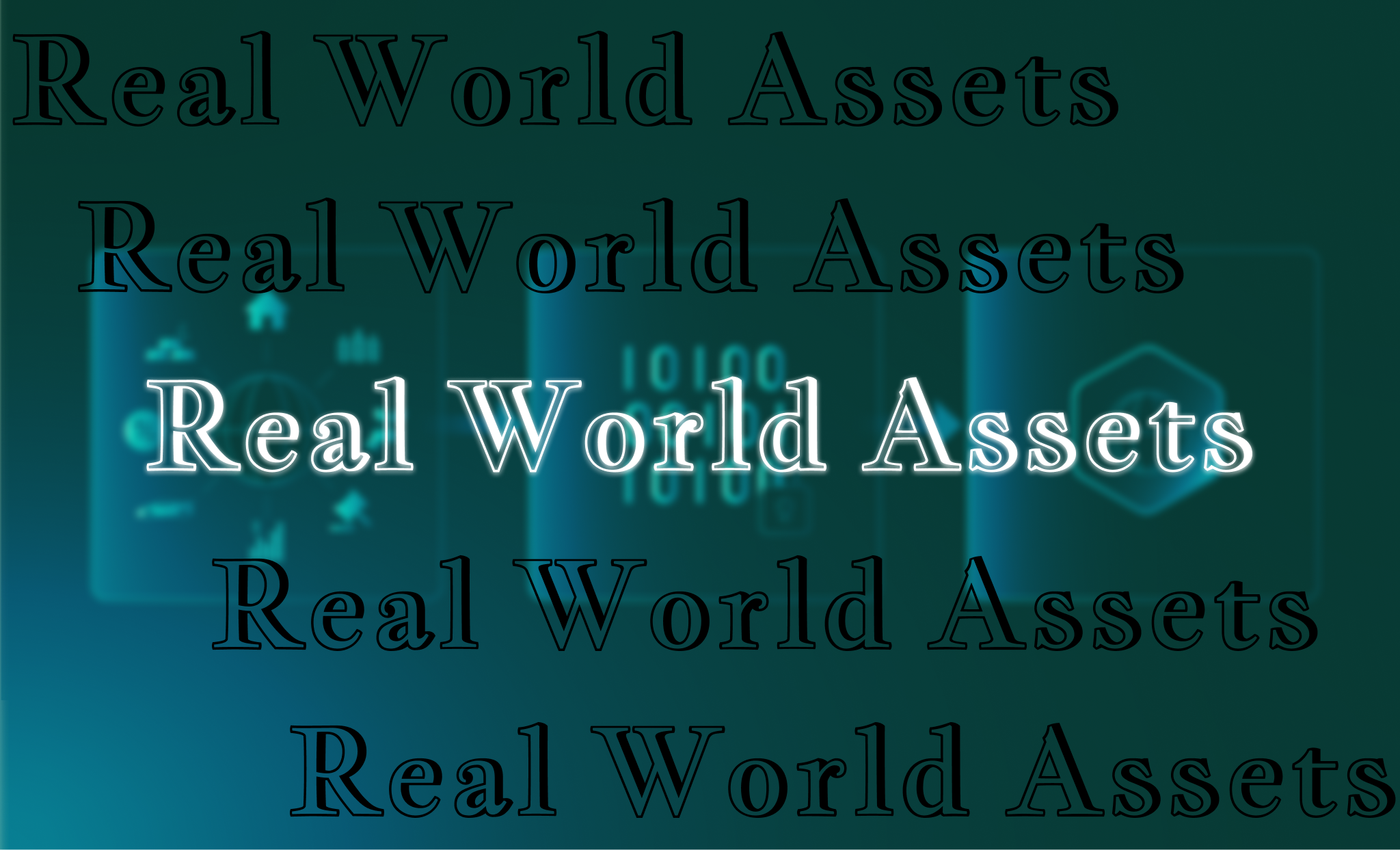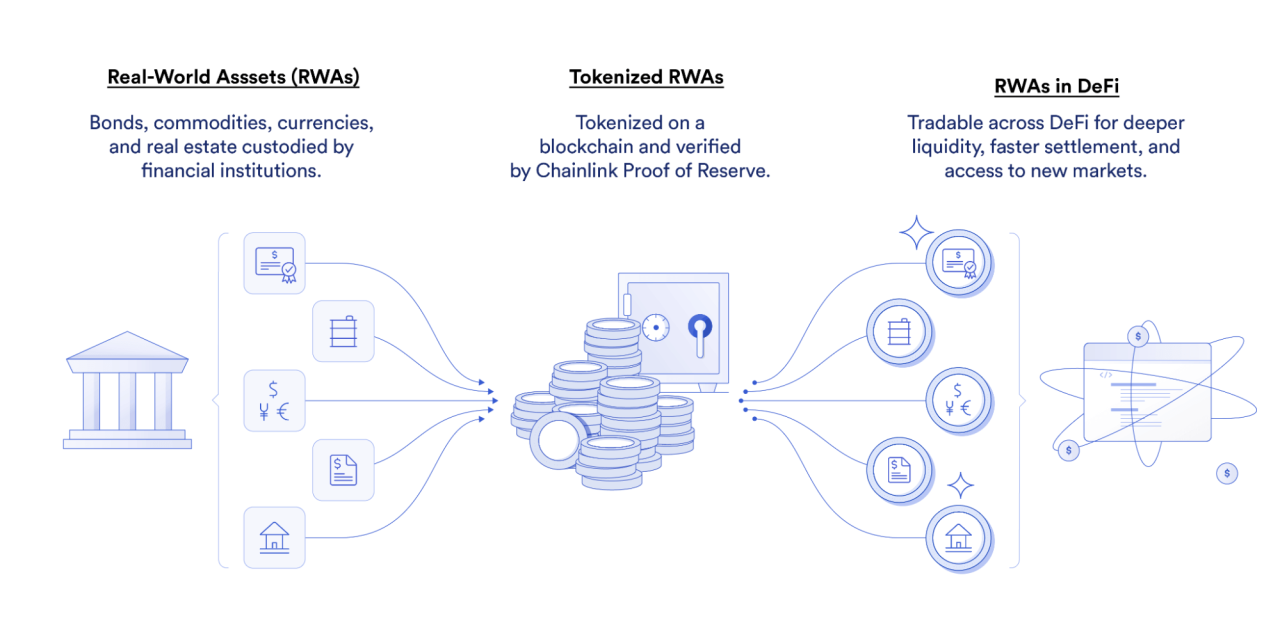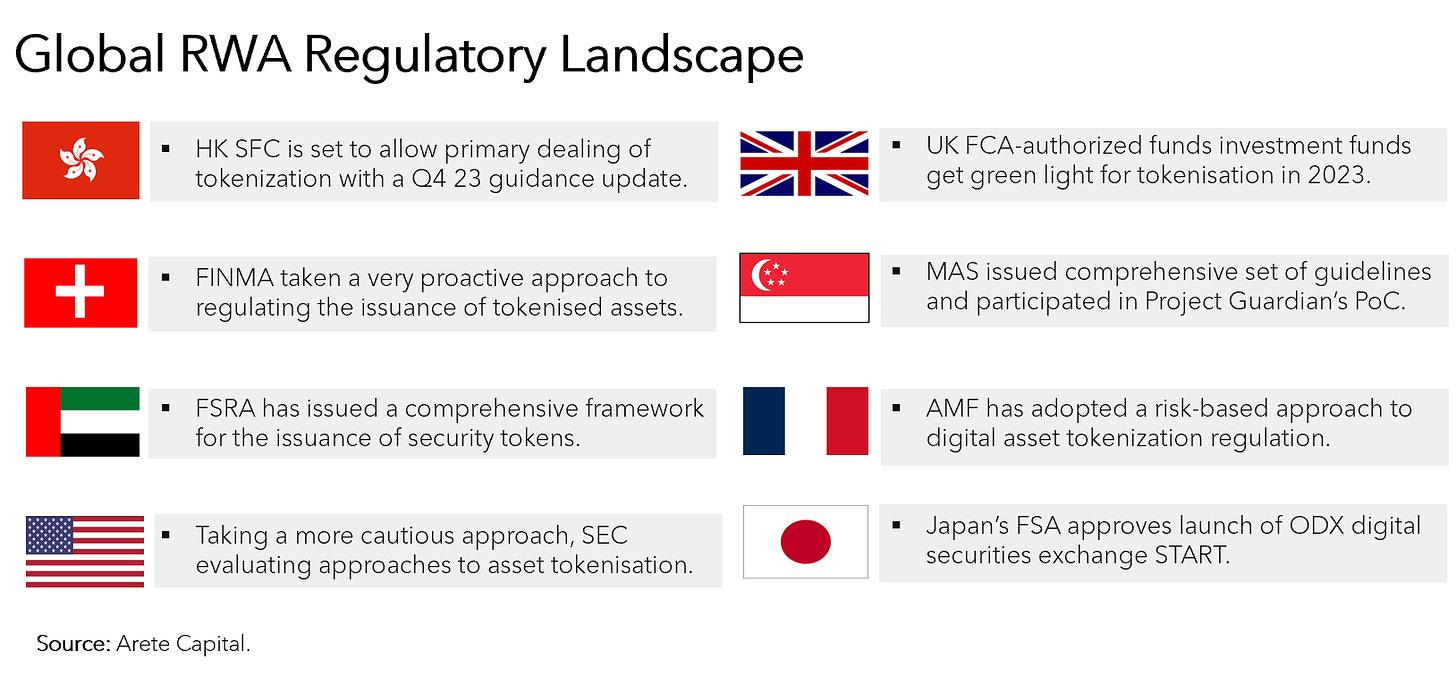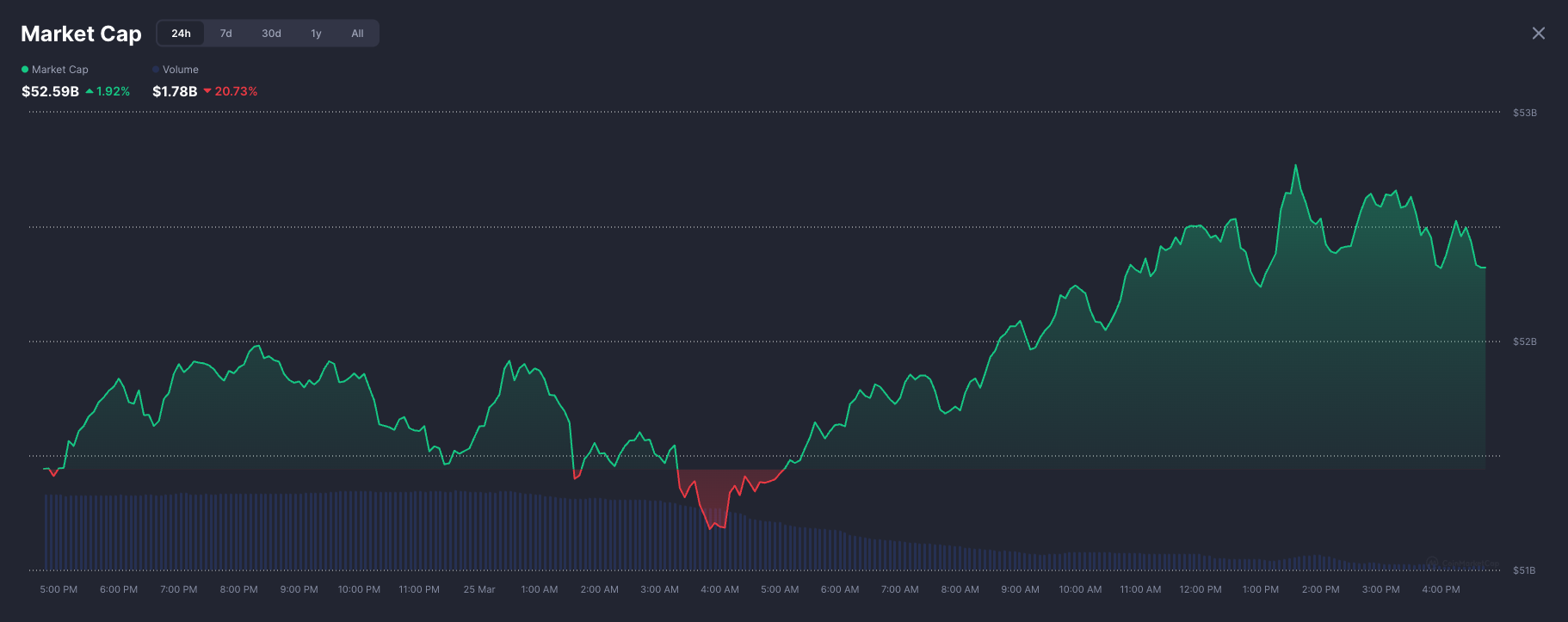Real World Assets
 Ani
Ani
Real-World Assets (RWAs) refer to tangible or intangible items from the traditional economy such as real estate, commodities, bonds, and intellectual property, that are represented digitally on blockchain platforms. Integrating RWAs into the Web3 ecosystem aims to democratize access to these assets, enhance liquidity, and introduce innovative financial products.
Digital assets and real-world assets (RWAs) are increasingly converging, unlocking new possibilities for ownership, liquidity, and financial inclusion. While digital assets traditionally include cryptocurrencies, stablecoins, and NFTs, RWAs bring physical and financial assets into the blockchain ecosystem through tokenization.
Digital assets exist purely in electronic form and are stored on decentralized ledgers like:
Cryptocurrencies (e.g., Bitcoin, Ethereum) as decentralized money.
Stablecoins (e.g., USDT, USDC) providing low-volatility digital cash.
NFTs (Non-Fungible Tokens) representing unique digital ownership, such as art, collectibles, and intellectual property.
RWAs expand the scope of digital assets by bringing real-world value on-chain which further enables:
Fractional Ownership: Investors can own small shares of high-value assets like real estate, gold, and fine art.
Enhanced Liquidity: Traditionally illiquid assets, such as private equity and real estate, become tradeable on blockchain-based marketplaces.
Programmability: Smart contracts automate transactions, compliance, and profit distribution, reducing reliance on intermediaries.
Traditional finance (TradFi) and Web3 are merging through tokenization. Tokenized Real Estate allows investors to buy property shares without requiring full ownership. Tokenized Bonds and Equities introduce institutional-grade financial instruments to DeFi. Real-World Collateral in DeFi enables users to borrow against RWAs, such as tokenized invoices, supply chain assets, and luxury goods. By integrating RWAs into the digital asset space, Web3 is paving the way for a more inclusive, efficient, and transparent financial ecosystem.

Types of RWAs in Web3
Tokenized Real Estate: Platforms like Lofty and RealT enable fractional ownership of properties, allowing investors to participate in the real estate market with reduced capital requirements.
Tokenized Bonds and Securities: Asset managers, including Janus Henderson, are exploring tokenization to enhance efficiency and reduce costs in bond and equity markets.
Tokenized Commodities: Projects are emerging that represent commodities like gold, diamond and oil as digital tokens, offering investors a more accessible and liquid means to trade these assets.
Tokenized Carbon Credits: By converting carbon credits into digital tokens, companies can engage in a more streamlined trading process, facilitating their sustainability initiatives.
The integration of RWAs into Web3 has led to the development of specific token standards to ensure compliance, interoperability, and functionality:
ERC-1400: This standard focuses on security tokens, emphasizing regulatory compliance and flexibility in representing asset ownership on the blockchain.
ERC-3525: Designed for semi-fungible tokens, ERC-3525 allows each token to maintain its distinct identity while being fragmentable and tradable, offering a nuanced approach to asset representation.
ERC-3475: This standard facilitates the issuance and trading of decentralized bonds with multiple redemption data, simplifying the management of liquidity pools and reducing transaction costs.
ERC-6065: Still in review stage, this proposal introduces an open structure for physical real estate and property to exist on the blockchain. This standard builds off of ERC-721, adding important functionality necessary for representing real world assets such as real estate. The three objectives this standard aims to meet are: universal transferability of the NFT, private property rights attached to the NFT, and atomic transfer of property rights with the transfer of the NFT. The token contains a hash of the operating agreement detailing the NFT holder’s legal right to the property, unique identifiers for the property, a debt value and foreclosure status, and a manager address.
ERC-7765: This standard defines an interface to carry a real world asset with some privileges that can be exercised by the holder of the corresponding NFT.

Since RWAs involve tangible assets and legal frameworks, security is critical to prevent fraud, hacking, and regulatory non-compliance.
Smart Contract Security
Audited Code: RWAs often rely on complex smart contracts. Regular security audits (by firms like CertiK or Quantstamp) help prevent vulnerabilities.
Access Control: Role-based access ensures that only authorized parties can modify or transfer assets.
Multi-Sig Wallets: Using multi-signature wallets adds an extra layer of security for high-value asset management.
Regulatory Compliance & Identity Verification
KYC/AML Protocols: Tokenized RWAs must comply with Know Your Customer (KYC) and Anti-Money Laundering (AML) regulations to prevent illicit transactions.
On-Chain Identity: Decentralized identity solutions, such as Soulbound Tokens (SBTs) or Verifiable Credentials (VCs), help validate asset ownership securely.
Data Privacy & Encryption
Zero-Knowledge Proofs (ZKPs): RWAs can use ZKPs to verify transactions without exposing sensitive details.
Off-Chain Data Storage: Sensitive asset data can be stored off-chain while using blockchain for verification, reducing on-chain risks.
Insurance & Risk Mitigation
Decentralized Insurance: Platforms like Nexus Mutual or Chainproof offer insurance against smart contract failures.
Oracles & Valuation Checks: Secure oracles (e.g., Chainlink) provide real-time price feeds and asset valuation to prevent price manipulation.

The tokenization of real-world assets (RWAs) is transforming financial markets, but it also brings regulatory challenges. Governments and financial authorities worldwide are working to establish frameworks that ensure compliance, security, and consumer protection while fostering innovation.
Securities Regulations
Many tokenized RWAs, such as real estate, equities, and debt instruments, fall under securities laws in different jurisdictions. Regulations like:
U.S. SEC (Securities and Exchange Commission): Treats tokenized assets as securities if they meet the Howey Test, requiring them to follow registration and disclosure requirements.
EU Markets in Crypto-Assets (MiCA) Regulation: Provides a framework for tokenized securities and stablecoins, ensuring transparency and investor protection.
Singapore (MAS - Monetary Authority of Singapore): Has a Sandbox Framework allowing regulated experimentation with asset tokenization.
KYC/AML & Compliance Standards
To prevent money laundering and fraud, most jurisdictions require Know Your Customer (KYC) and Anti-Money Laundering (AML) checks for RWA platforms.
FATF (Financial Action Task Force) Guidelines: Recommend Travel Rule compliance, ensuring identity verification for transactions above a threshold.
Privacy vs. Compliance: Zero-Knowledge Proofs (ZKPs) and decentralized identity solutions help balance on-chain privacy with regulatory needs.
Taxation & Reporting
Tokenized RWAs create tax implications based on jurisdiction:
Capital Gains Tax: Profits from selling tokenized assets may be subject to capital gains tax.
Asset Valuation & Reporting: Regular valuation and reporting of tokenized assets to authorities are required for transparency.
Stablecoin & Tokenized Cash Flow Taxation: Income from tokenized debt, real estate, or commodities might be taxed as traditional financial instruments.
Ownership & Legal Recognition
Governments are working on defining legal ownership of RWAs on-chain.
Smart Contracts & Property Rights: Can on-chain ownership be legally recognized in courts?
Jurisdictional Conflicts: A tokenized asset might exist globally, but legal disputes arise under national laws.
Custody & Recovery: Who is responsible if an RWA platform fails or assets are lost?
Watch out for Evolving Policies, Hybrid Compliance Models and CBDCs & Tokenized Banking Assets in particular.
The security of buying and trading real-world assets (RWAs) depends on factors like platform credibility, smart contract security, regulatory compliance, and asset verification. While tokenized assets offer transparency and efficiency, they also introduce risks that buyers and investors need to be aware of.
Smart Contract Vulnerabilities – Poorly written or unaudited smart contracts can be exploited, leading to asset loss.
Counterfeit or Fake Assets – Fraudulent RWAs may be minted without proper legal backing, leading to fake ownership claims.
Regulatory Uncertainty – Some jurisdictions do not yet recognize tokenized RWAs, leading to potential legal risks.
Liquidity Risks – Unlike cryptocurrencies, RWAs may have lower liquidity, making it harder to sell them quickly.
Centralized Points of Failure – If an RWA marketplace is centralized or lacks proper decentralization measures, assets could be frozen or mismanaged.

Current RWA market is valued at about $50 Billion. $16 Trillion Market by 2030 is what experts predict RWAs as a huge part of the financial system soon. Real estate, stocks, and commodities will likely move on-chain in the next decade. RWAs are set to change the game in finance, real estate, supply chains, and even digital ownership. As web3 tech gets better, RWAs will make buying, selling, and investing in real-world stuff easier, faster, and more accessible to everyone.
🚀 Big Banks & Companies Are Jumping In
Major players like BlackRock and JPMorgan are already testing tokenized assets.
Soon, stocks, bonds, and even real estate could be traded on blockchain just like crypto.
🌍 Buying & Selling Globally, No Middlemen
Imagine owning a piece of a building in New York while sitting in India, all through blockchain.
No need for banks or brokers—just fast, direct transactions.
📊 AI + Blockchain = Smarter Investments
AI-powered smart contracts will handle loans, risk assessments, and payments automatically.
People with no credit history might finally get fair financial access through blockchain.
🔗 RWAs Across Different Blockchains & TradFi
RWAs will work across multiple blockchains like Ethereum and Solana.
You could use tokenized gold or real estate as collateral in both traditional finance and DeFi.
Businesses can tokenize future earnings, property, or contracts and sell shares to investors. Own a virtual house that’s linked to a real apartment.
RWAs are more than just a trend. They’re the future of finance and ownership.
Subscribe to my newsletter
Read articles from Ani directly inside your inbox. Subscribe to the newsletter, and don't miss out.
Written by
